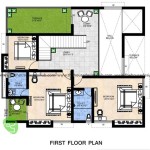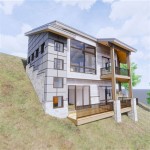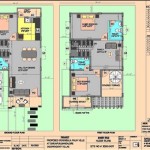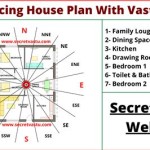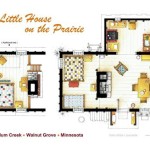4 Car Garage Carriage House Plans: A Comprehensive Guide
Carriage houses, once relegated to the realm of horse-drawn buggies, have experienced a resurgence in popularity. Their adaptability, charm, and potential for multi-functional use make them a desirable addition to many properties. A four-car garage carriage house blends this classic aesthetic with the practicality of ample vehicle storage, often incorporating additional living or workspace above. This article explores key considerations for those looking to implement such a plan.
Defining the Purpose
Before delving into design specifics, establishing the intended use of the carriage house is crucial. Will it solely house vehicles, or will the upper level serve as a guest suite, home office, or recreational space? Defining the purpose dictates the layout, size, and necessary amenities. A dedicated garage space will prioritize vehicle access and storage solutions, while a multi-use structure will require careful consideration of living space design, plumbing, and electrical systems.
Assessing Local Regulations
Zoning ordinances and building codes vary significantly between municipalities. Researching local regulations early in the planning process is critical. Restrictions may exist regarding building height, setbacks from property lines, allowable square footage, and permitted uses. Ignoring these regulations can lead to costly revisions or even project rejection. Consulting with local authorities and experienced builders ensures compliance and avoids potential setbacks.
Exploring Architectural Styles
Carriage houses offer a wide range of architectural possibilities. From traditional designs echoing the classic carriage house aesthetic with gambrel roofs and cupola details to more contemporary interpretations incorporating clean lines and modern materials, the style should complement the main house and overall property aesthetic. Consider the existing architectural style, surrounding landscape, and desired visual impact when selecting a design.
Maximizing Storage Solutions
A four-car garage presents significant storage potential beyond just vehicles. Incorporating built-in shelving, overhead storage racks, and designated areas for tools and equipment enhances organization and maximizes space utilization. Careful planning of the garage layout can accommodate larger vehicles, recreational equipment, and seasonal items while maintaining clear access and maneuverability. Consider the types of vehicles and equipment to be stored to determine the appropriate dimensions and layout within the garage.
Designing the Living Space
If the carriage house plans incorporate a living area, careful consideration of its design is essential. Factors such as natural light, ventilation, and layout influence the functionality and comfort of the space. Open floor plans can create a sense of spaciousness, while strategically placed windows maximize natural light and offer views. Consider the needs of potential occupants, whether they be guests, family members, or renters, to ensure the space is well-suited to its intended purpose.
Choosing Materials and Finishes
The selection of materials and finishes impacts both the aesthetic and durability of the carriage house. Exterior siding options range from traditional wood and brick to more contemporary materials like fiber cement and metal. Roofing materials should complement the chosen architectural style and offer long-term protection from the elements. Interior finishes, including flooring, cabinetry, and countertops, should align with the overall design aesthetic and intended use of the space. Consider the local climate and maintenance requirements when selecting materials to ensure longevity and minimize future upkeep.
Budgeting and Planning
Developing a realistic budget is essential before embarking on a carriage house project. Construction costs can vary significantly depending on the size, complexity, and chosen materials. Factor in expenses related to site preparation, permits, materials, labor, and potential unforeseen costs. Working with a qualified architect and builder helps establish a comprehensive budget and ensures cost-effective project management. A detailed plan outlining the project timeline, material selections, and contractor responsibilities helps maintain control over the budget and minimizes potential delays.
Considering Energy Efficiency
Incorporating energy-efficient features into the carriage house design can lead to long-term cost savings and reduce environmental impact. Proper insulation, energy-efficient windows, and high-efficiency HVAC systems contribute to lower energy consumption. Consider incorporating renewable energy sources, such as solar panels, to further reduce reliance on traditional energy sources. These upfront investments can yield significant long-term savings and enhance the overall sustainability of the project.

Pin On Garage Ideas

Carriage House Plans Craftsman Style Plan With 4 Car Garage 034g 0011 At Www Thehouseplan Com

3068 5 58 X 28 4 Car Garage Plan With Loft By Behm Design Carriage House Plans

Image Result For Cost Building 4 Car Garage House Plans Apartment Carriage

049g 0005 4 Car Garage Apartment Plan With Work Area Carriage House Plans

Plan 51682 Traditional Style 4 Car Garage

Plan 5233 New Garage Carriage House Plans

Carriage House Plans Plan With 3 Car Garage And Apartment 007g 0017 At Thehouseplan Com

Barn Style Carriage House Garage Plan 6 Car 1948 Sq Ft

Carriage House Plans Craftsman Style Plan With 2 Car Garage Design 051g 0020 At Thehouseplan Com

